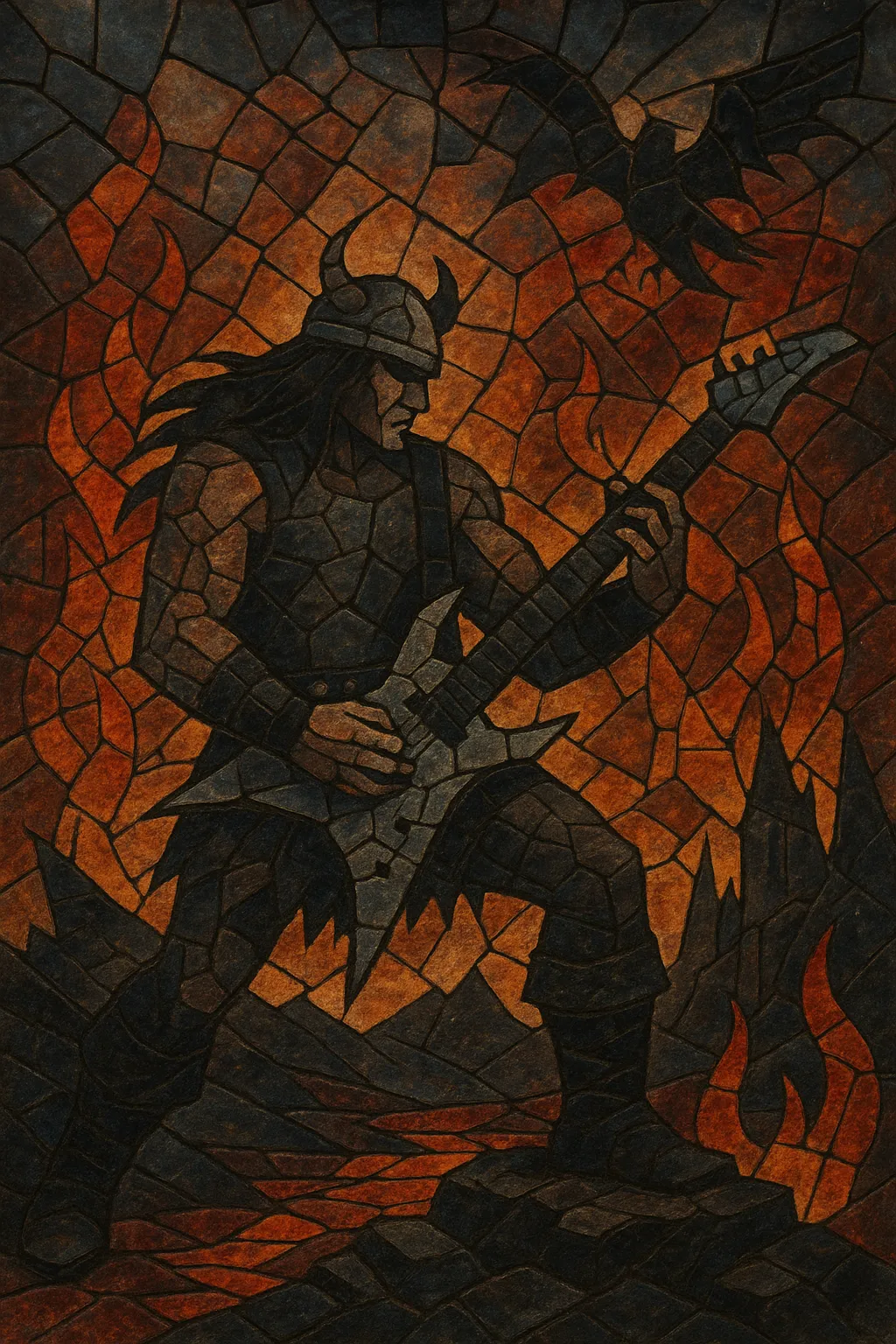
US power metal (USPM) is a distinctly American branch of power metal that emerged in the early-to-mid 1980s. Compared to the more keyboard-forward, anthemic European power metal, USPM is riff-driven, darker in tone, and more aggressive, drawing heavily from speed, thrash, and the NWOBHM while retaining melodic vocals and heroic themes.
Its sonic hallmarks include tight, palm-muted guitar riffs, twin-guitar harmonies, athletic lead work, prominent double-kick drumming, and powerful, high-register yet gritty vocals. Keyboards are used sparingly, if at all. Lyrics often explore epic fantasy, mythology, history, and apocalyptic or occult imagery, presented with a streetwise, dramatic edge.
Song structures can be more complex than standard heavy metal, with dynamic tempo shifts, minor-key modal color, and elaborate bridges and codas. The overall feel is urgent and epic at once—muscular, brooding, and triumphant without sacrificing heaviness.
US power metal took shape in the United States as a heavier, grittier response to the melodic impulses already present in traditional heavy metal and the NWOBHM. Bands like Manilla Road (Kansas), Omen (California), Jag Panzer (Colorado), Helstar (Texas), Savatage (Florida), and Riot (New York) fused speed metal urgency with classic twin-guitar harmonies and soaring vocals. Early Fates Warning and Liege Lord added more progressive structures while keeping the aggressive edge.
Through the late 1980s, USPM codified a sound distinct from emerging European power metal: fewer keyboards, tougher riffing, darker minor-key moods, and a vocal approach that balanced operatic power with grit. Labels like Metal Blade and Shrapnel helped circulate the style. Vicious Rumors, Virgin Steele, and others reinforced the template of precision riffing, heroic themes, and intricate yet compact songcraft.
The early 1990s saw thrash’s peak and then the rise of alternative and grunge, pushing USPM to the underground. Bands like Iced Earth carried the torch with a power/thrash hybrid. From the 2000s onward, festivals (e.g., Keep It True in Germany, ProgPower USA) and reissue campaigns revitalized interest; legacy acts reunited (e.g., Cirith Ungol’s broader epic/heavy overlap), and a new wave of American bands (Pharaoh, Visigoth, Eternal Champion, Sumerlands) drew from USPM’s muscular melodicism. Today, USPM stands as a parallel tradition to European power metal—leaner, meaner, and proudly riff-first—informing both progressive and traditional metal scenes.

